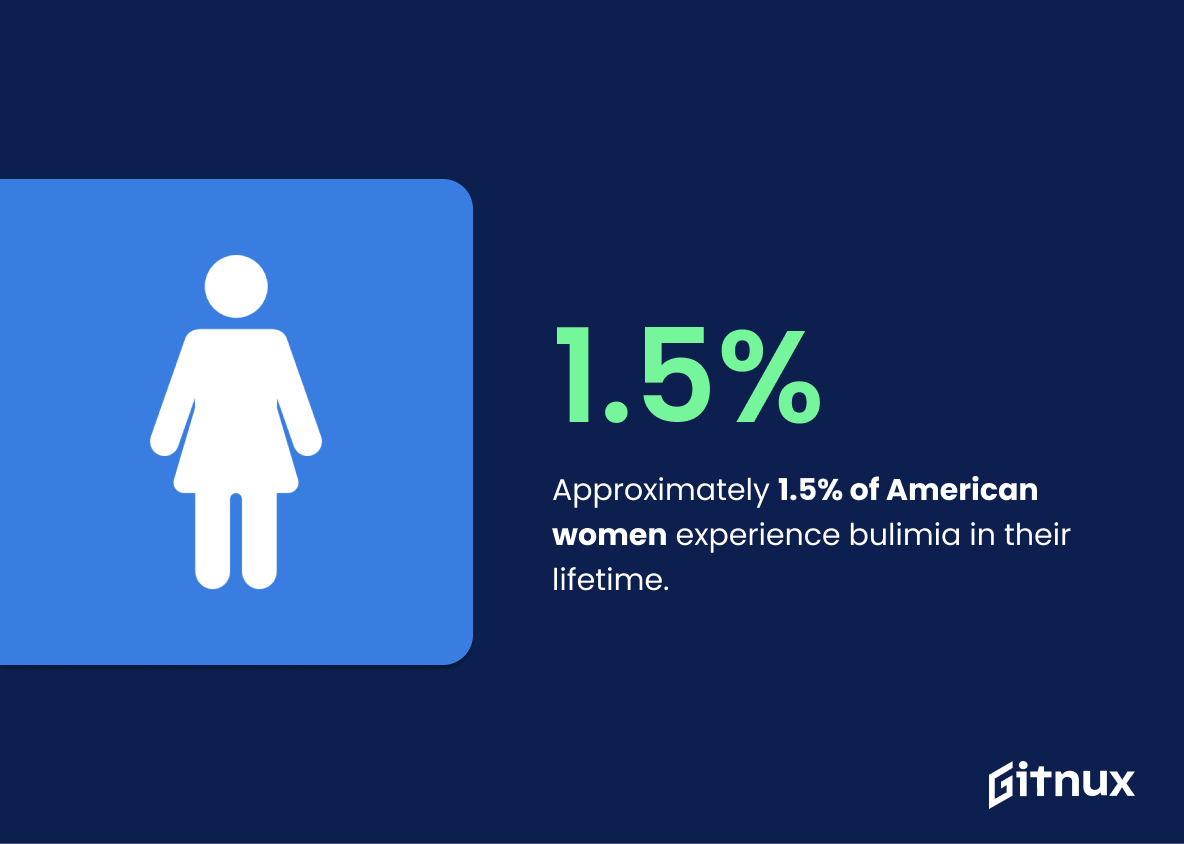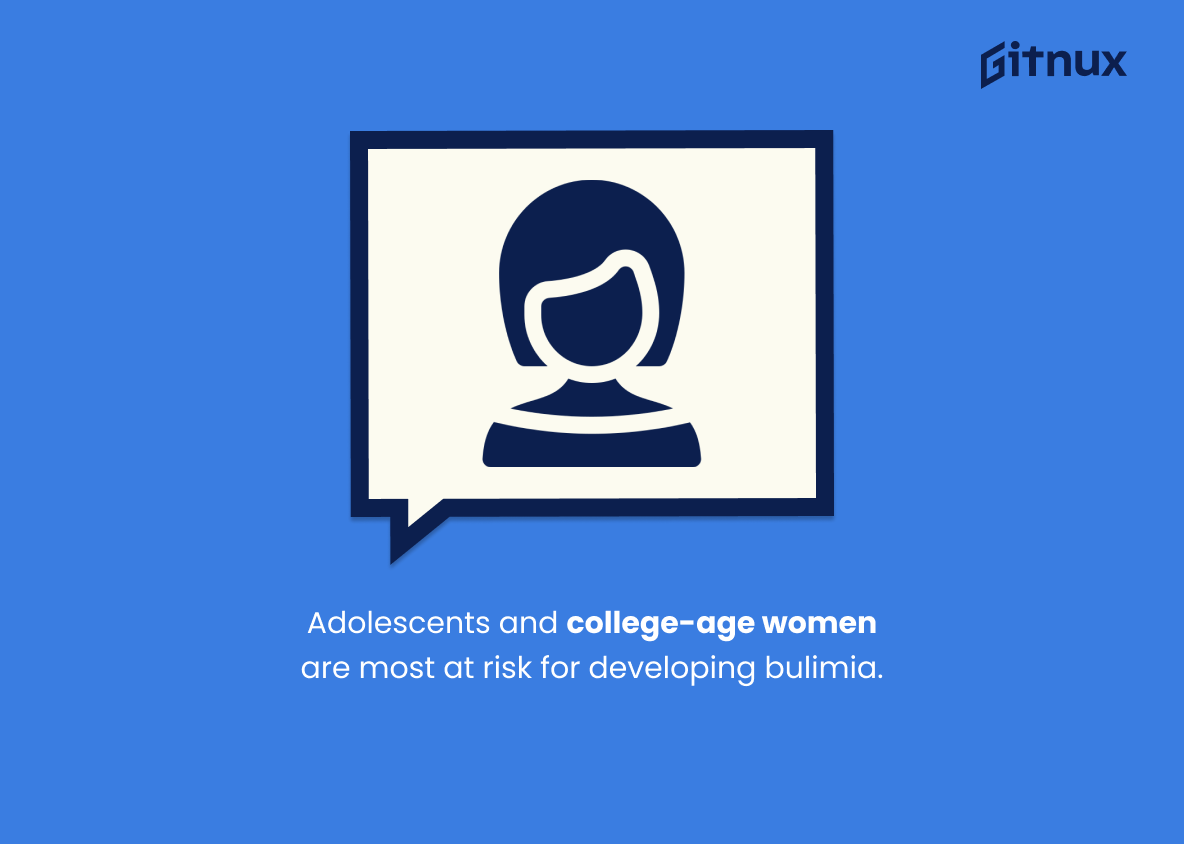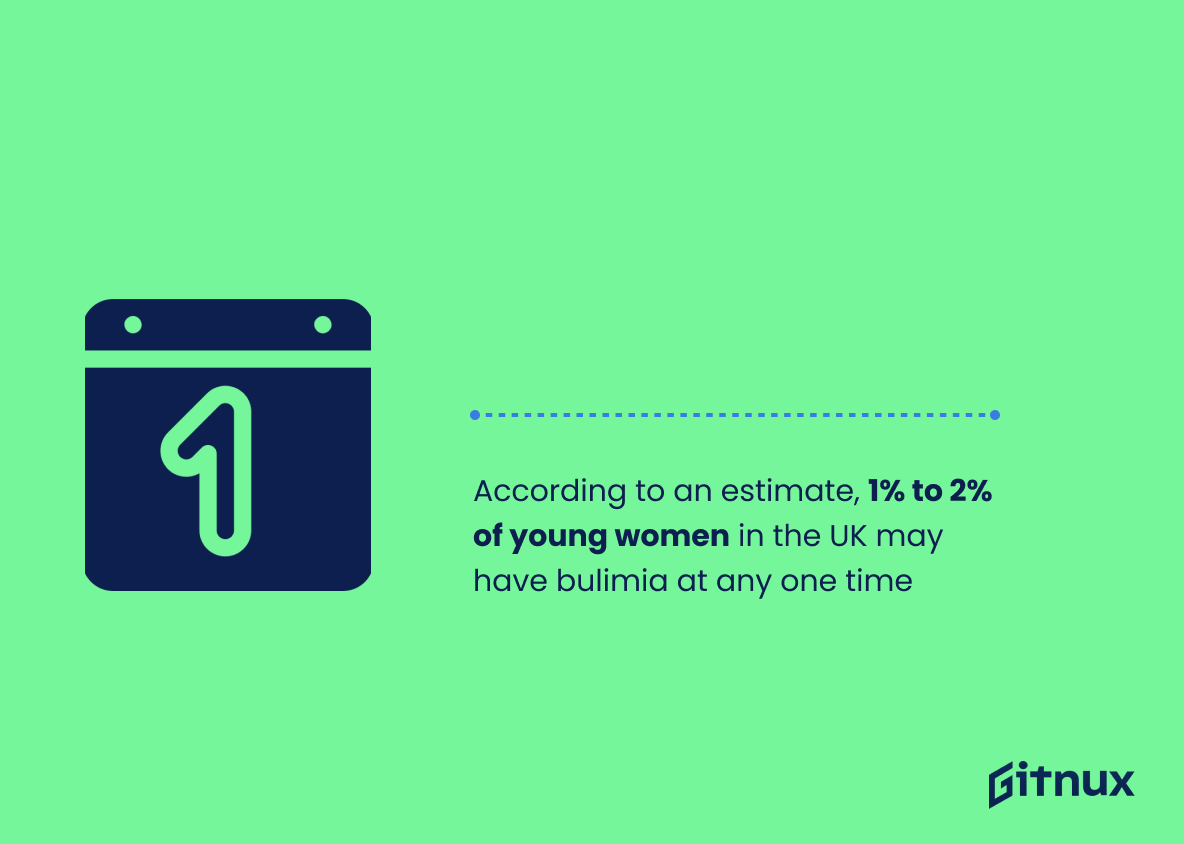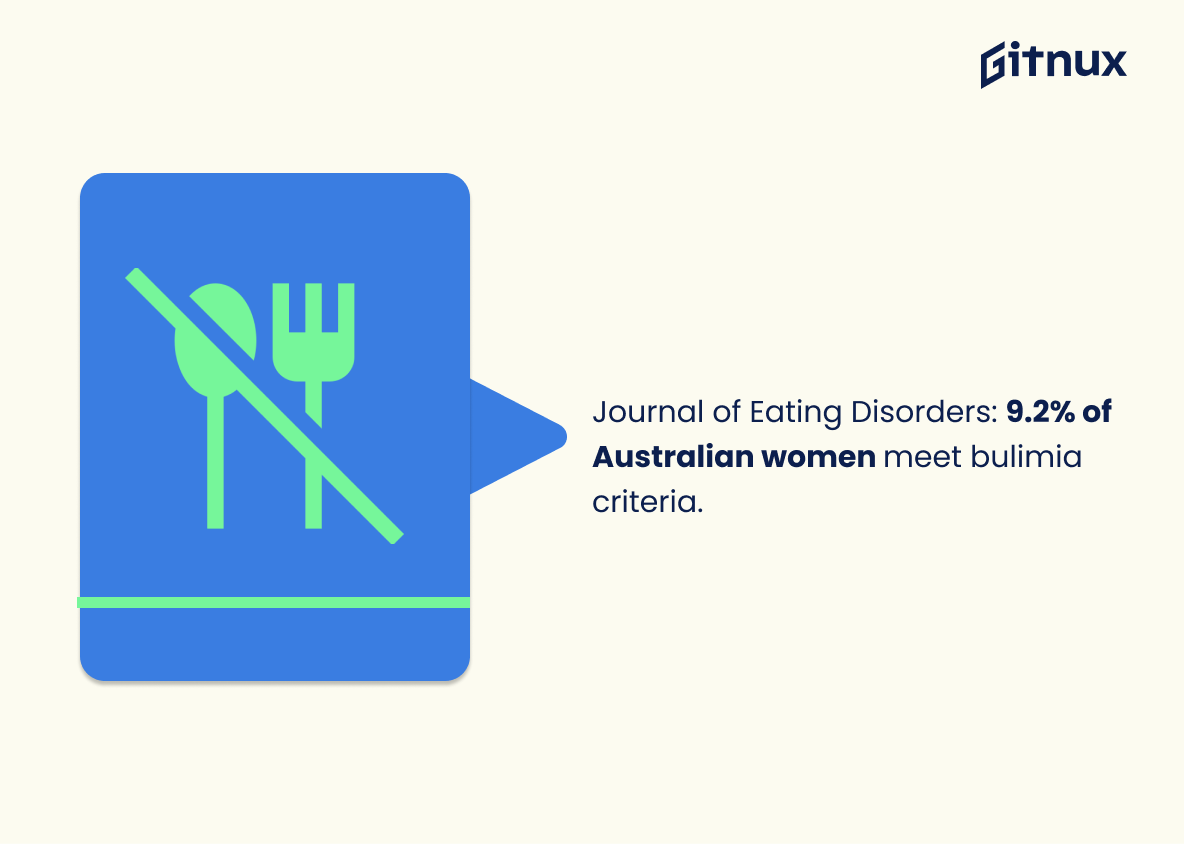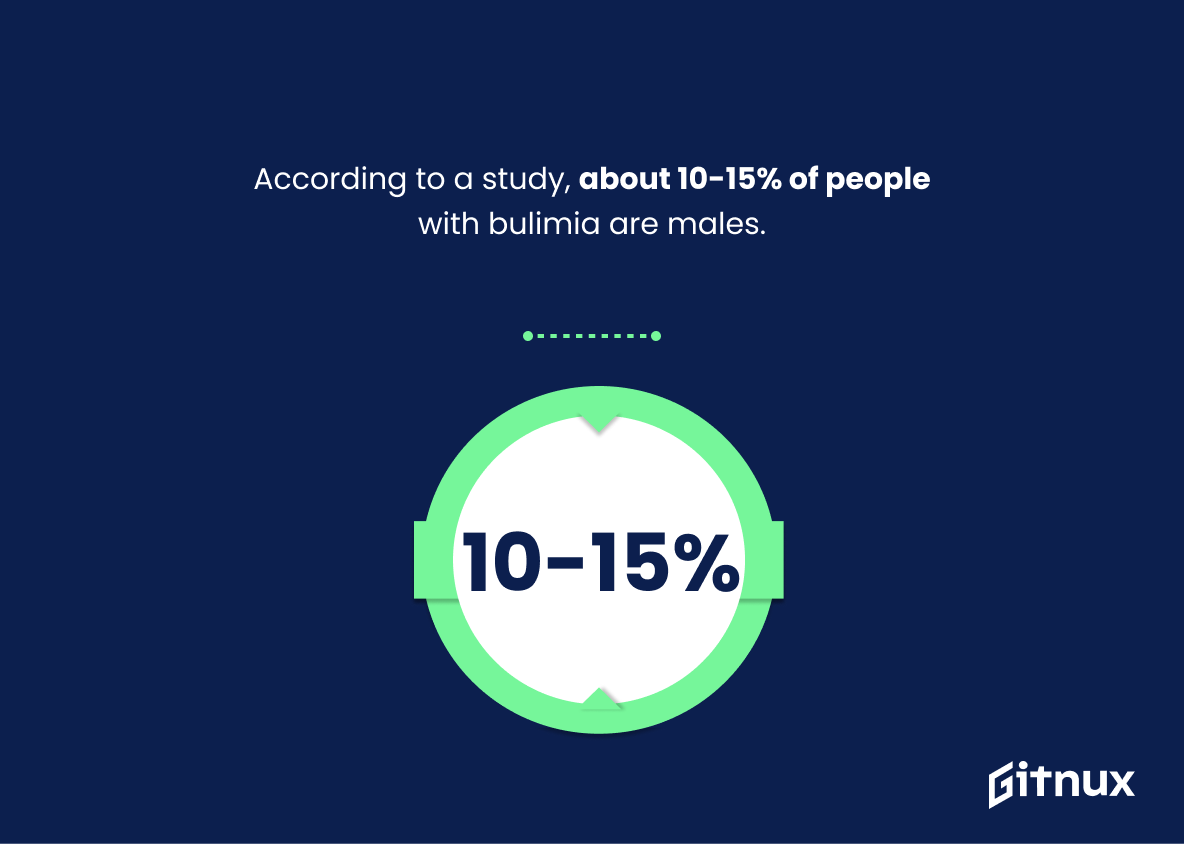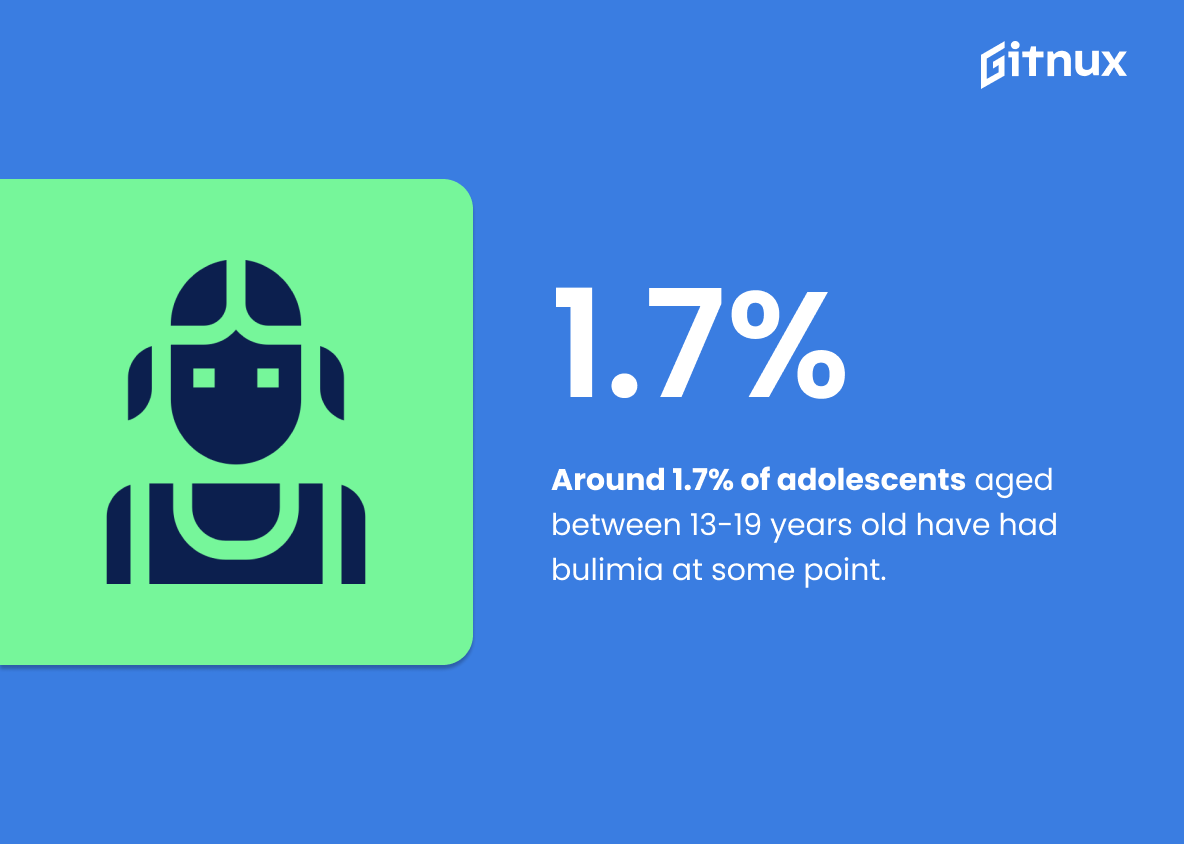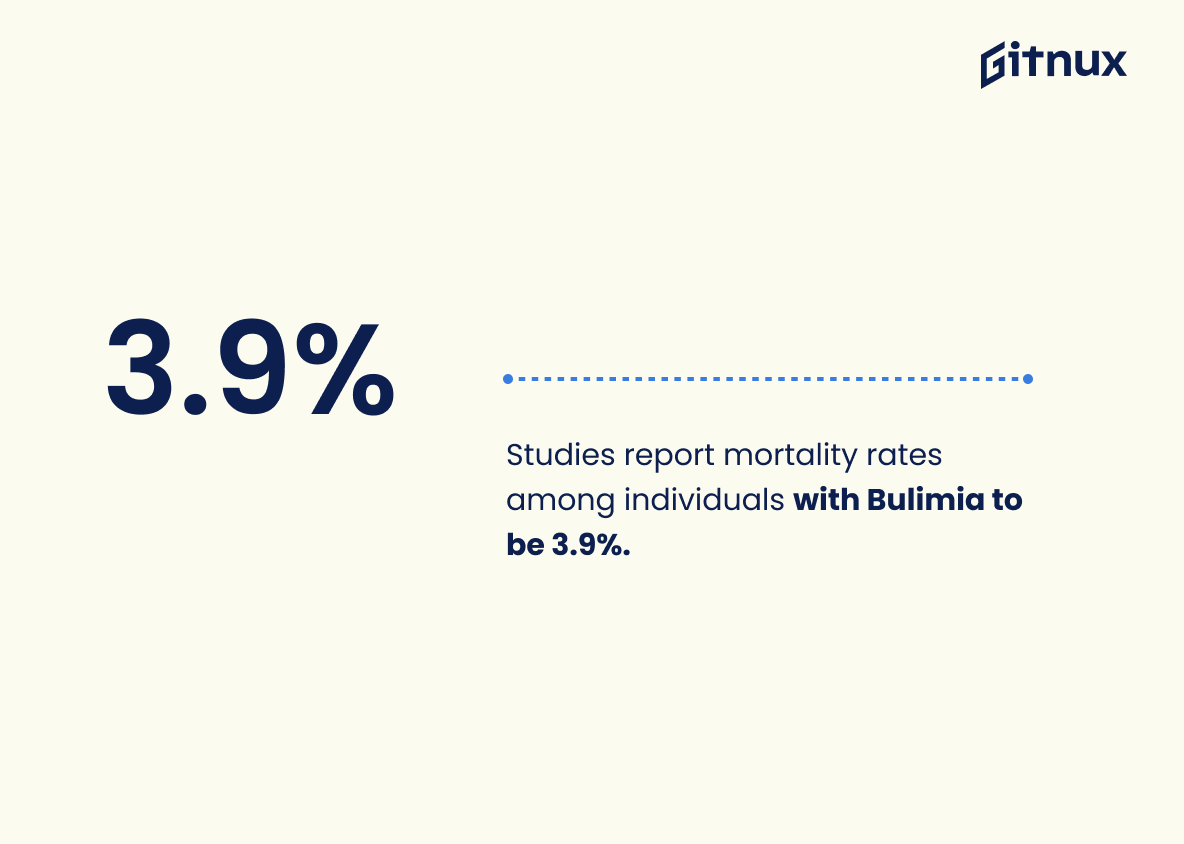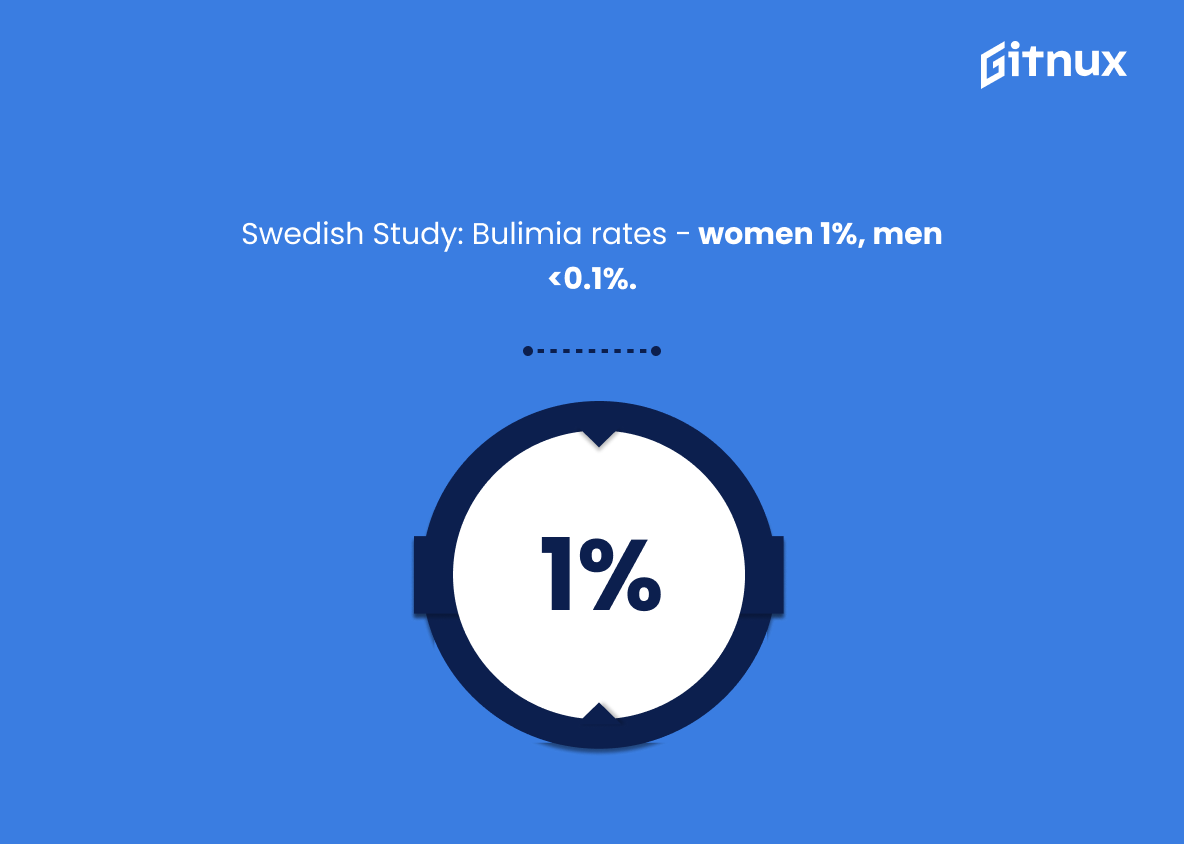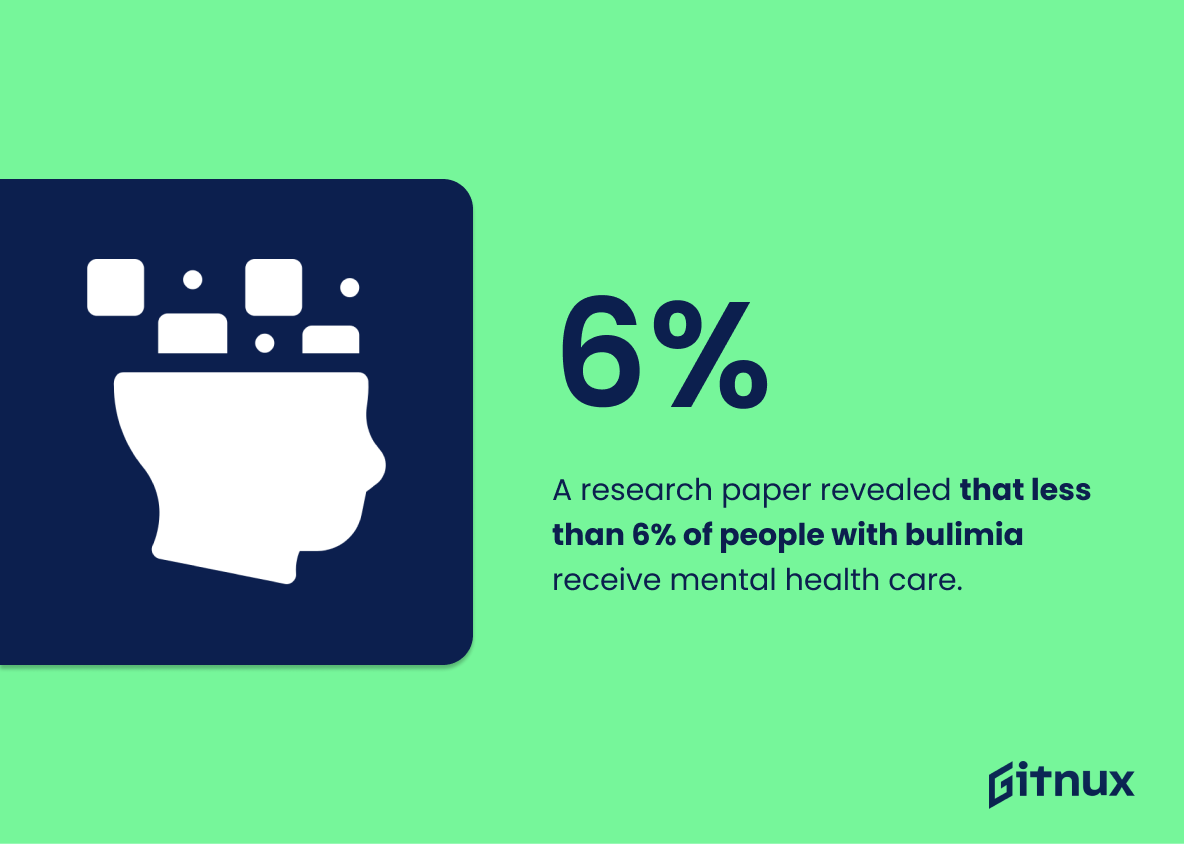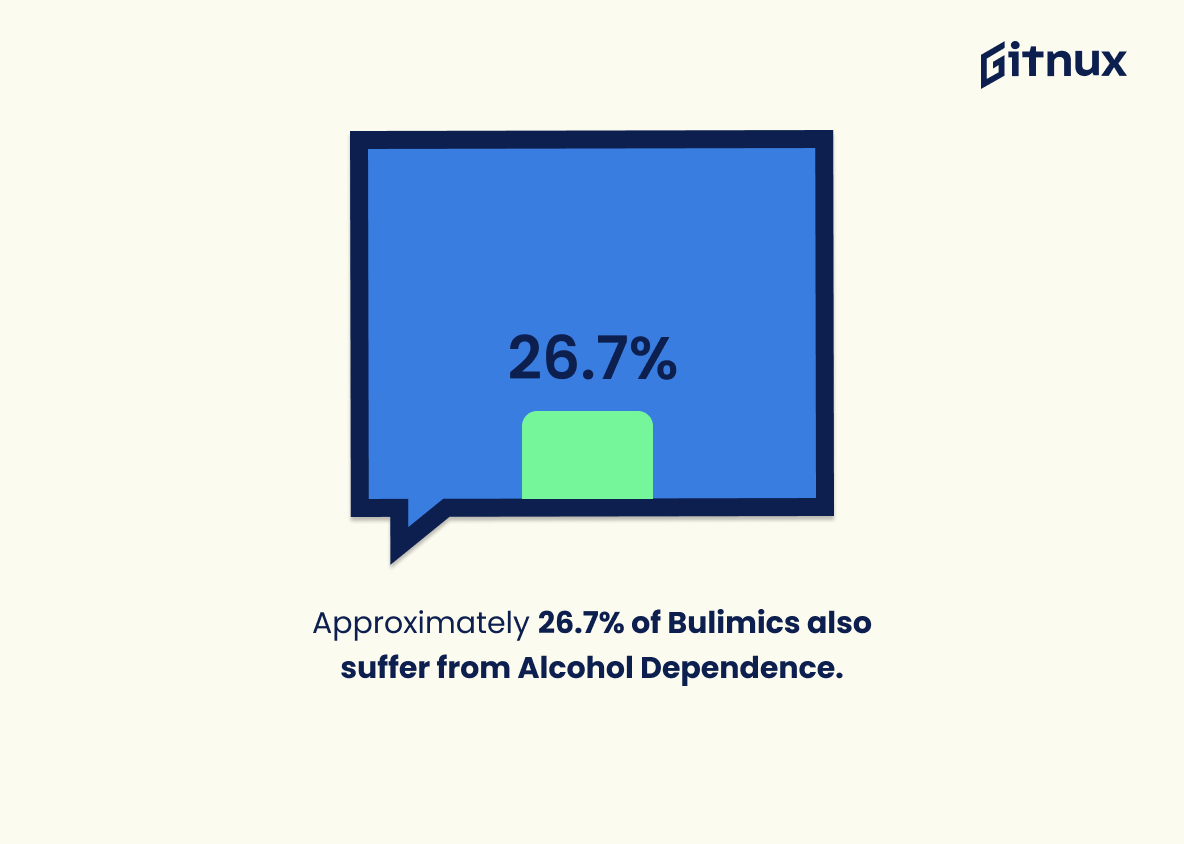In a world increasingly fixated on appearance, eating disorders have gained grim prominence, becoming a profound public health issue. Among these, bulimia nervosa looms large as a silent and often unreported epidemic. This blog post aims to shed light on the unseen aspects of this deep-seated issue through the stark reality revealed in bulimic statistics.
Hop on a journey with us as we delve into the numbers, dissect the demographics, and unmask the alarming global trends revolving around bulimia. This eye-opening exploration not only amplifies awareness, but is a clarion call to foster understanding, employ preventive measures, and encourage early detection.
The Latest Bulimic Statistics Unveiled
Approximately 1.5% of American women experience bulimia in their lifetime.
The undeniable imprint of this statistic lies in its stark revelation – a formidable 1.5% of American women grapple with the intrusive struggles of bulimia during their lifetime. Given the context of a blog centered around bulimic statistics, this numerical truth underscores both the prevalence and gravity of this eating disorder in the matter-of-fact universe of percentages.
It reinforces the urgency to address bulimia amongst American women, fostering a cognizant understanding of the situation. Beyond just numbers, this statistic invokes the narrative of women’s mental health, reflecting the urgency in employing strategic approaches to combating this issue. Hence, in the backdrop of blog post discussions about Bulimic Statistics, this figure weaves a compelling story of a health crisis that calls for attention, compassion, and concrete action.
Adolescents and college-age women are most at risk for developing bulimia.
The mere glance at this statistic serves as an underlining siren, signaling the urgent attention that needs to be directed towards a specific demographic group: adolescents and college-age women, who are revealed as the most vulnerable to developing bulimia. In the maze of bulimic statistics we delve into in this blog post, this strident statistic acts as a red thread, guiding our focus towards this at-risk population.
By pinpointing the highest risk group, it enables a clearer understanding and underscores the necessity for targeted interventions and preventive efforts. Furthermore, it invites reflection on societal pressures that may contribute to such patterns, emphasizing the urgency of addressing these underlying issues. Ultimately, this statistic isn’t just a cold, stark number — it’s a call to action painted with a human face, reminding us that behind every percentage and decimal are real people grappling with real problems.
According to an estimate, 1% to 2% of young women in the UK may have bulimia at any one time
In exploring the turbulent waters of bulimic statistics, we anchor our discussion firmly around the staggering insight: an estimated 1% to 2% of young women in the UK potentially grapple with bulimia at any given moment. This figure, although appearing minuscule at first glance, echoes the gravity of the situation when digested in deeper context.
It underscores the immense probability that in every room of 100 young women, at least one, if not two, wrestles with this eating disorder silently. By weaving this eye-opening fact into our conversation, we illuminate the largely invisible yet rampant problem of bulimia, advocating for awareness, understanding, and mobilization to support the afflicted young women in our society.
A study published in the Journal of Eating Disorders found that approximately 9.2% of surveyed women in Australia met the criteria for bulimia.
In the realm of uncovering Bulimic Statistics, the revelation from the Journal of Eating Disorders carves out a significant niche. The fact that almost one in every ten surveyed women in Australia meets the criteria for bulimia unveils an alarming reality. It resonates the pervasiveness of this eating disorder and conveys the urgency for focused outreach. Moreover, this statistic becomes an indispensable pillar to underscore the scale of the problem, guiding readers towards understanding the seriousness of bulimia in our society.
According to a study, about 10-15% of people with bulimia are males.
Peeling back the layers of an often misunderstood condition like bulimia, we find a surprising reality reflected in the data. The least expected demographic, males, constitute 10-15% of those afflicted with this eating disorder as per research findings.
This spotlight on gender distribution not only dispels the widely held misbelief that only females suffer from bulimia but also hints at a possibly underrepresented segment in need of attention. Hence, unmasking the ‘invisible’ group, these bulimic statistics urge us to delve deeper into diverse narratives of this condition, fostering better understanding, sensitivity, and more holistic interventions.
Around 1.7% of adolescents aged between 13-19 years old have had bulimia at some point.
Highlighting the statistic – “Around 1.7% of adolescents aged between 13-19 years old have had bulimia at some point,” draws attention to the pervasive reach of bulimia into our young people’s lives. It underscores the urgency of conversations, preventative measures, and resources dedicated to this issue. This particular number, seemingly small, is a warning alert that thousands of young people are grappling with this eating disorder.
In the labyrinth of adolescence, burdened with increasing societal and self-imposed pressures, these youngsters are turning to harmful coping mechanisms. This number forces us to confront the stark reality and to ignite a call to action–a conscious intervention and constructive dialogues on self-image, mental health, and healthy eating.
An Average duration of a bulimia episode is about 8.3 years.
Shining a spotlight on the chilling statistic of an average bulimia episode enduring for about 8.3 years has an invaluable role in our dialogue surrounding Bulimic Statistics. For one, it underscores the long-term torment that sufferers typically wrestle with, imploring us to recognize bulimia as an enduring battle, not a fleeting issue.
More so, it implores healthcare professionals, family, and friends to commit their support and understanding over a prolonged period. Notwithstanding, it’s a stark reminder for policy makers and stakeholders to reinforce long-term solutions, therapeutic interventions and support for those affected. Evidently, this statistic forms a key piece in the puzzle of understanding the complexity and duration of struggle with this debilitating eating disorder.
Studies report mortality rates among individuals with Bulimia to be 3.9%.
To truly comprehend the gravity and severity that Bulimia brings to the human condition, the spotlight needs to swing onto this chilling fact – a whopping 3.9% of individuals with Bulimia succumb to this disorder. This figure carves a solemn recognition of the life-threatening potential of Bulimia, amplifying why the fight against such eating disorders should remain in our societal priority.
It isn’t just a footnote on a health report or a mere number in a research paper; it is the undeniable testament of lives prematurely extinguished. For anyone delving into Bulimic statistics through this blog post, this percentage serves as a sobering reminder that behind each data point, each statistic, is a human story caught in a struggle against this destructive eating disorder.
Bulimia nervosa was shown to have the highest rates of lifetime comorbidity at 83.6% in a study.
Unveiling the staggering figure – 83.6% – demonstrates the fierce grip of comorbidity alongside bulimia nervosa, thus amplifying the critical reality of this eating disorder. Allowing readers to comprehend the unseen side of bulimia and look beyond the conventional knowledge of it being just an eating disorder.
This notable element of the narrative underscore the urgency of comprehensive therapeutic approaches. It undeniably calls for increased vigilance to understand and address the intertwined mental health conditions and enable those battling bulimia to navigate path towards recovery more effectively.
A Swedish Study revealed that the prevalence of Bulimia in Sweden was about 1% among women and less than 0.1% among men.
Delving into this Swedish study generates a fascinating perspective. A clear gender divide is etched out – women are ten times more likely to grapple with Bulimia than men. Probing into this 1% prevalence among women, compared to a less than 0.1% male occurrence, spins a revelatory tale: the clutches of Bulimia appear to grip women far more tight in Sweden.
This gender disparity in Bulimia incidence could spur conversations about societal pressures, gender roles, and mental health supports, offering a significant leap in understanding this complex and often stigmatized disorder. Ultimately, the distinction not only broadens our knowledge base, but also emphasizes the dire need for tailored interventions, awareness programs, and coping mechanisms, particularly for Swedish women, thus emerging as an essential statistic in this blog about Bulimic Statistics.
A research paper revealed that less than 6% of people with bulimia receive mental health care.
Drawing light upon this research paper that unveils a stark reality, where less than 6% of individuals battling bulimia seek professional mental health care, provides a significant perspective in any discourse on Bulimic Statistics. Evidently, this figure underscores a critical gap in mental health services accessibility, and their utilization, specifically for those grappling with this eating disorder.
Thus, by giving this statistic prominence, it not only imparts greater understanding about the current state of bulimia treatment, but also propels advocacy for increased support services and creates a compelling call to address this unfortunate discrepancy. It serves as a stark reminder, that while we have made strides in understanding and addressing the disorder of bulimia itself, there is still significant work left in ensuring adequate mental health care provision for the affected individuals.
Approximately 26.7% of Bulimics also suffer from Alcohol Dependence.
In the intricate web of Bulimic statistics, this piece of data serves as a stark reminder that bulimia doesn’t exist in a bubble. With around 26.7% of patients battling both bulimia and alcohol dependency, it’s clear the struggle is multi-faceted. This metric shines a light on the harsh reality of co-occurring disorders, affirming that bulimic individuals often grapple with not just their eating disorder, but a problematic relationship with alcohol as well.
This understanding can significantly shape the direction of treatment approaches by acknowledging and addressing the interconnectedness of these issues for holistic healing. Thus, this figure isn’t just a number, but a call to action for comprehensive and sensitive treatment strategies for bulimia.
Conclusion
Bulimia is more than just a mental health disorder; it’s a complex issue that impacts millions of people worldwide. Bulimic statistics communicate the severity of this problem, highlighting the harsh reality of this illness. The numbers continue to rise, warranting more attention, better interventions, intervention strategies, and comprehensive recovery plans. Most importantly, these statistics show us that bulimia isn’t selective; it affects people of all ages, races, and genders.
The journey to recovery seems long and daunting, but understanding and considering these figures can equip us better in supporting those battling bulimia. Although these facts may be alarming, they are a critical part of raising awareness, promoting education, and initiating change. Together, we can use this knowledge to take a stand against bulimia, make a positive impact, and help those affected turn their lives around.
References
0. – https://www.jamanetwork.com
1. – https://www.www.ncbi.nlm.nih.gov
2. – https://www.jeatdisord.biomedcentral.com
3. – https://www.www.mayoclinic.org
4. – https://www.www.bbc.co.uk
5. – https://www.www.nimh.nih.gov
6. – https://www.pubmed.ncbi.nlm.nih.gov
7. – https://www.www.eatingdisorderhope.com
8. – https://www.www.sciencedaily.com
